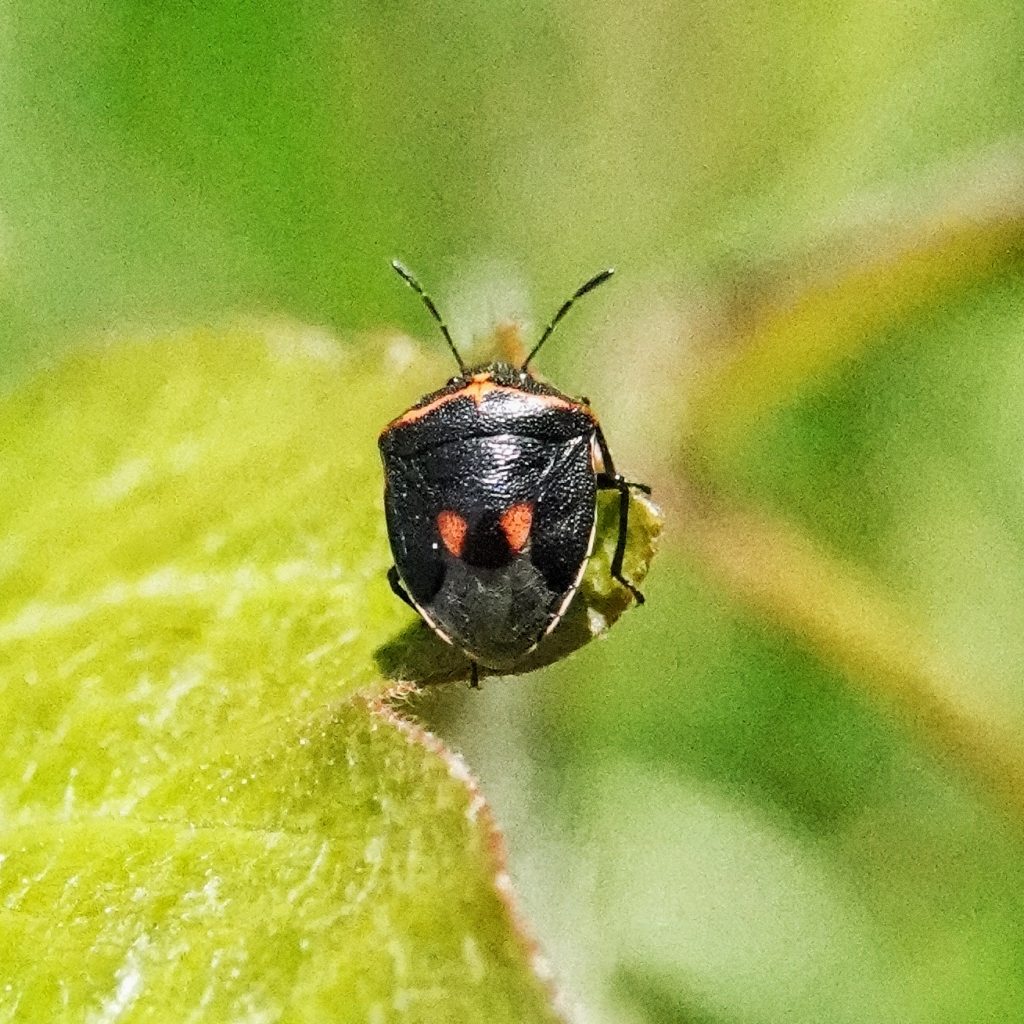
Whilst photographing the Pacific poison oak featured in the last profile I encountered this rather striking twice-stabbed stink bug (which is also sometimes called wee harlequin bug or two-spotted stink bug) perched on one of its leaves, but it was difficult to get close enough to get definitive photos of this small bug without worrying about accidentally brushing the poison oak itself. It also seemed dangerous to try to collect it (I’ll do a lot to capture a bug, but I draw the line at knowingly inflicting the contact dermatitis of poison oak on myself, although I did once heedlessly belly crawl through a patch of it in my tunnel visioned desire to photograph a Pacific clubtail dragonfly- thankfully I had spare clothes in the van that I could change into once I realized my foolish mistake), but eventually I got the bright idea to use a safe twig to sweep it into a container held under the leaf. I also, in what may have been a bit of over caution, rinsed the freezer euthanized specimen in alcohol before handling it.
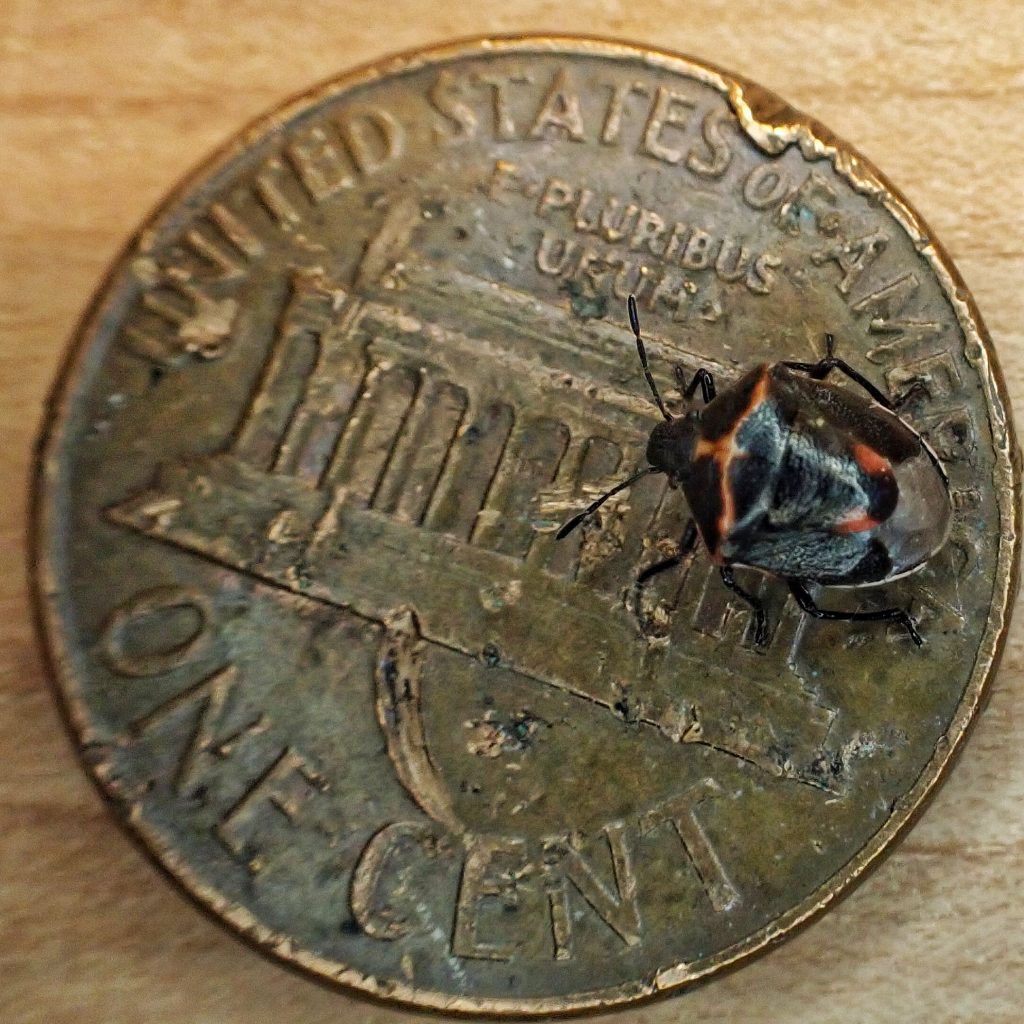
It also turns out that I needn’t have euthanized it for identification purposes, because the two red spots on the scutellum, and the thin, transverse red line on the pronotum, were definitive for Cosmopepla linteriana, but most members of the family Pentatomidae are not that easy. I had seen pictures of this stink bug before, but I had somehow missed the fact that they were less than 1/4” long. And this turned out to be one of the few bugs I found that day, despite the fact that the temperature was in the high 70s, and it was, at that point, the warmest day in 7 months, although the following day was the first 90⁰ day of 2023 in the Portland Metro area.
For those wondering about my absence, and the changes in the form of these profiles, see my recent blog, ‘Equinoctial evaluations’.
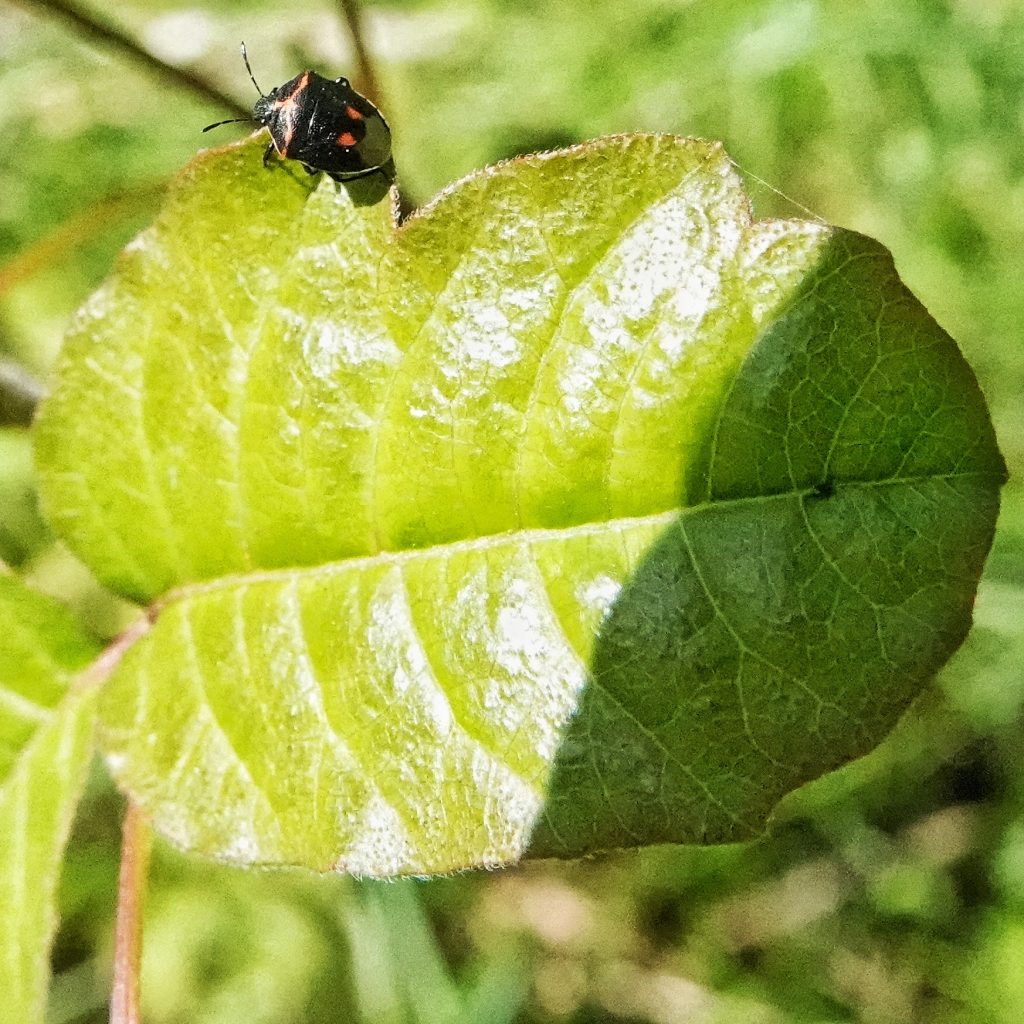
“Adult Cosmopepla bimaculata [now known as C. linteriana] discharge a volatile secretion from paired ventral metathoracic glands (MTG) when disturbed. Collected volatiles were similar in both sexes and consisted of n-tridecane (67%), (E)-2-decenal (12%), (E)-2-decenyl acetate (12%), (E)-2-hexenal (3%), hexyl acetate (2%), n-dodecane (2%), a tridecene isomer (1%), and n-undecane, n-tetradecane, and n-pentadecane (all <1%). In addition, undisturbed males produced a novel insect compound, (E)-8-heneicosene, whose function is unknown. The MTG secretion emerges as an enlarging droplet, which is held in place by a cuticular projection and a pleural scent area consisting of specialized rough cuticle surrounding the gland opening. Insects can selectively discharge from either the right or left gland or both glands simultaneously, can control the amount of fluid ejected, and can resorb the ejected secretion droplet back into the gland reservoir. In feeding trials, killdeer (Charadrius vociferous), starlings (Sturnus vulgaris), robins (Turdus migratorius), and anole lizards (Anolis carolinensis) rejected or demonstrated aversion to feeding on the bugs. Furthermore, bugs that lacked the secretion were more susceptible to predation than bugs with secretion, suggesting that the secretion functions in defense against predators.” Abstract of Sci-Hub | Chemical Defense in the Stink BugCosmopepla bimaculata | 10.1023/a:1020822107806 which is referenced in a great article by the BugLady, A Couple of Stinkbugs (Family Pentatomidae) – Field Station
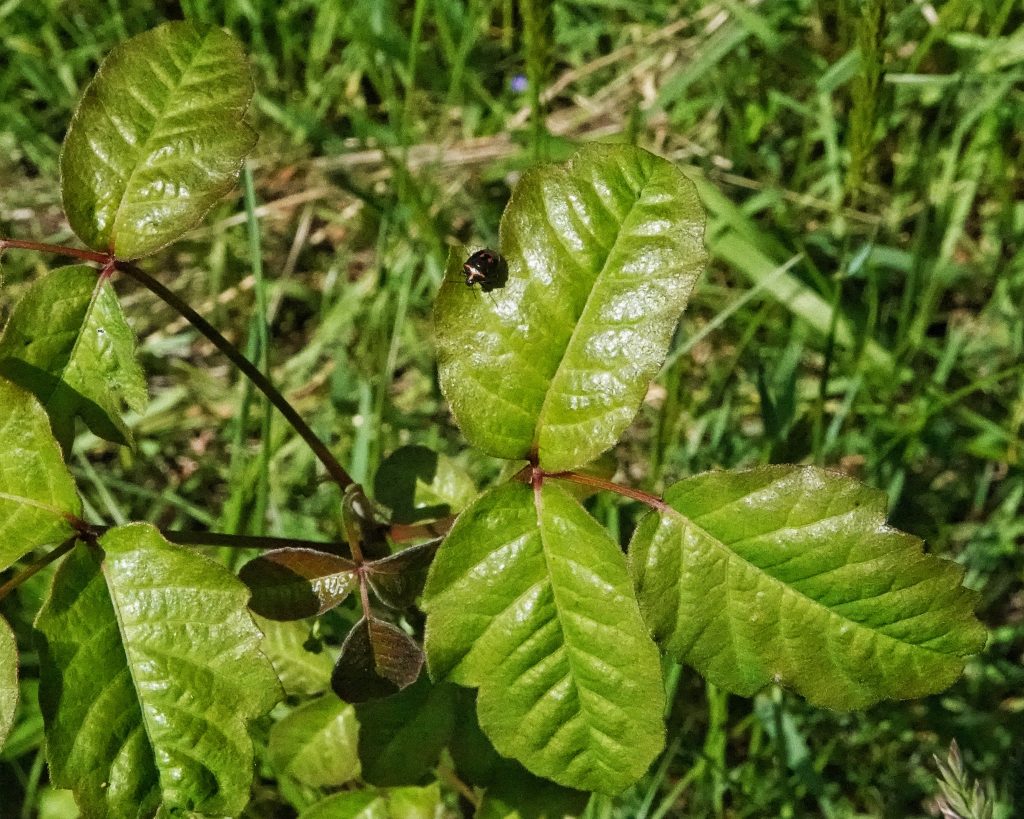
Description– 4.7-6.5 mm; “Adult C. lintneriana are black with a red, orange, or yellow band across the pronotum and a short red stripe along the midline, and two red spots at the apex of the scutellum.[4] Nymph coloration ranges from red to white with black markings that change as they grow.[5]” https://en.wikipedia.org/wiki/Cosmopepla_lintneriana
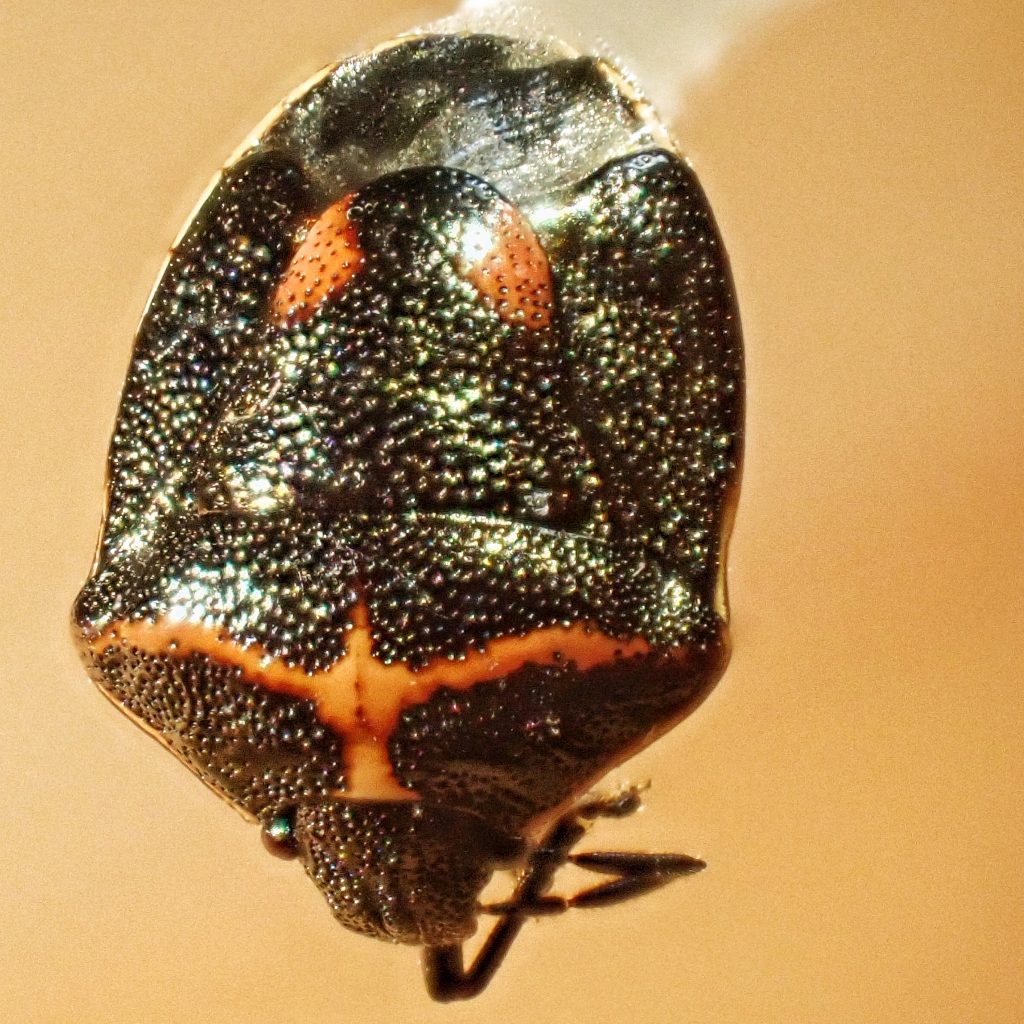
Similar species–Cosmopepla conspicillaris lacks spots on scutellum, and has thicker red line across pronotum which encloses 2 black spots; C. uhleri lacks red spots on scutellum has a thicker red line across pronotum, and is mostly brown; Chilocorus lady beetles are ± round, have no pronotal stripe, and their elytra reach the rear margin.
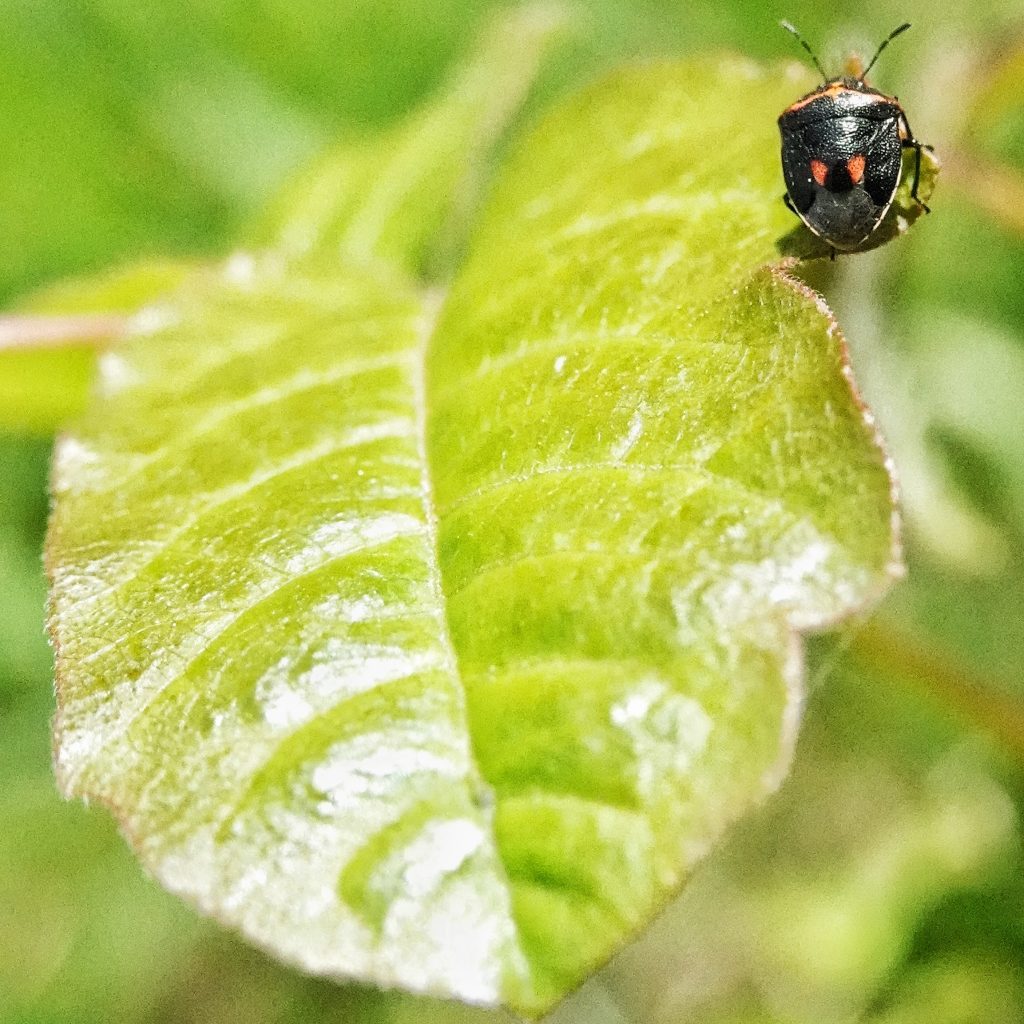
Habitat– Wherever any of their many different host plants are found.
Range-Apparently native to most of North America, excluding the American sw and southern Mexico.
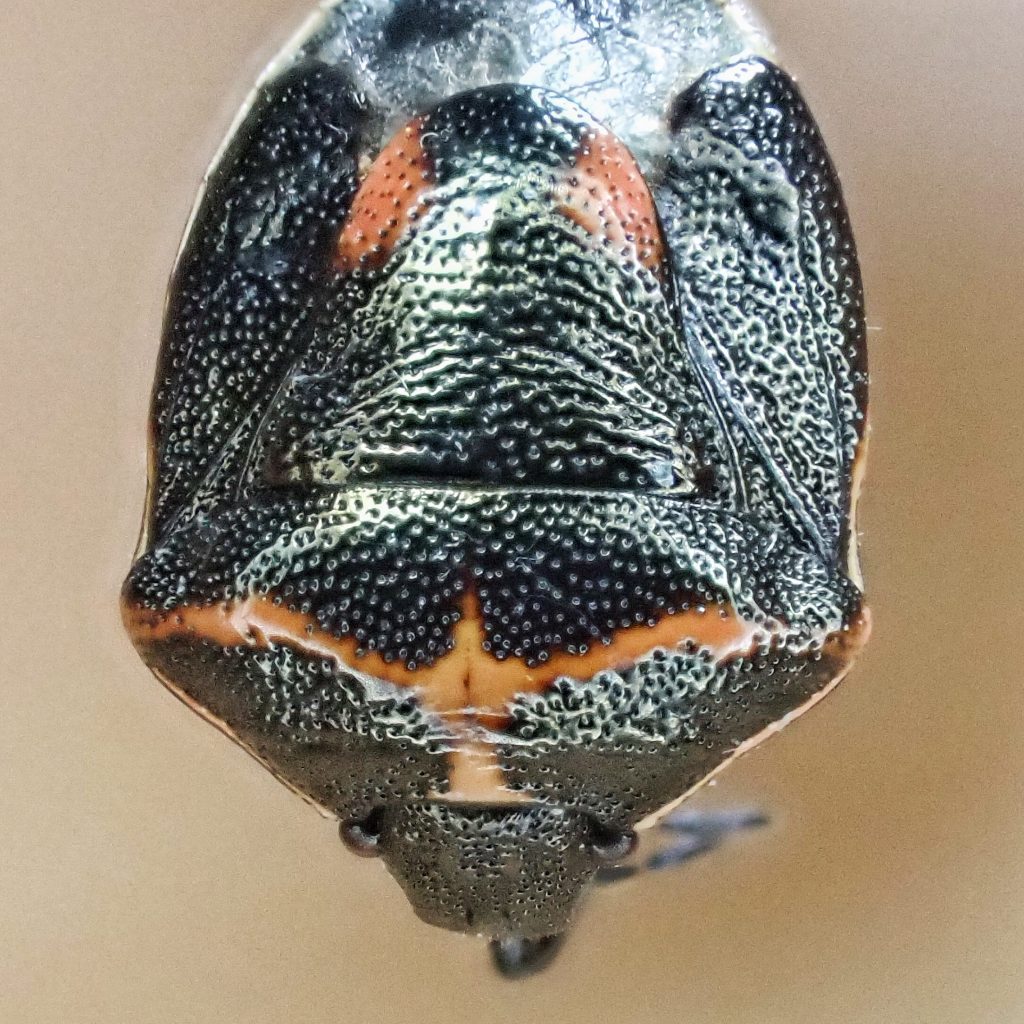
Eats– “…this insect is a plant feeder, injecting enzymes which break down plant tissues and cell walls, then vacuuming up the resulting nutritional slurry. Because twice-stabbed stinkbugs feed on a wide variety of plants, including milk thistle, echinacea, asparagus, oats, mint and goldenrod, they are found in a wide variety of habitats.” Twice-Stabbed Stink Bug – Cosmopepla lintneriana – North American Insects & Spiders
“polyphagous(3); most common stink bug on common milkweed (Asclepias syriaca) in Bowling Green, OH(5)” Species Cosmopepla lintneriana – Twice-stabbed Stink Bug – BugGuide.Net
“they feed on a bunch of different plants including the seeds of mints (especially hedge nettle, Stachys palustris), some composites, asparagus, and oats.” A Couple of Stinkbugs (Family Pentatomidae) – Field Station
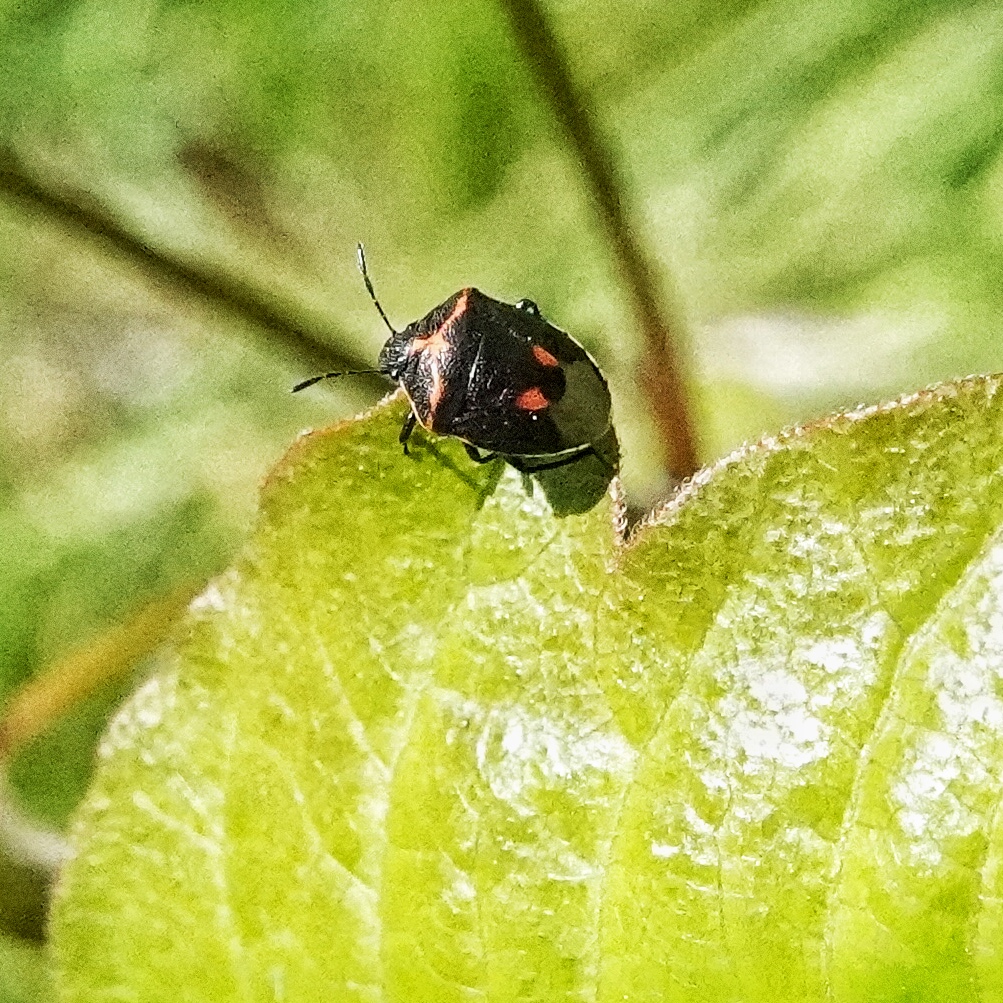
Eaten by– “Starlings sampled one bug and spit it out immediately, apparently put off by the instant “flavor burst.” The clever bug can time the chemical surprise to coincide with the moment it lands in a predator’s mouth (a time of higher danger rather than mild danger), which often results in its release, alive. Killdeers ate one, but then refused seconds. Anole lizards ate them a few times but then rejected them, implying the build-up of a toxin. American Robins were pragmatists; despite the unpleasant experience, they continued to eat TSSBs if nothing else was offered. Predators displayed aversion behaviors when the next TSSBs were served up.” A Couple of Stinkbugs (Family Pentatomidae) – Field Station
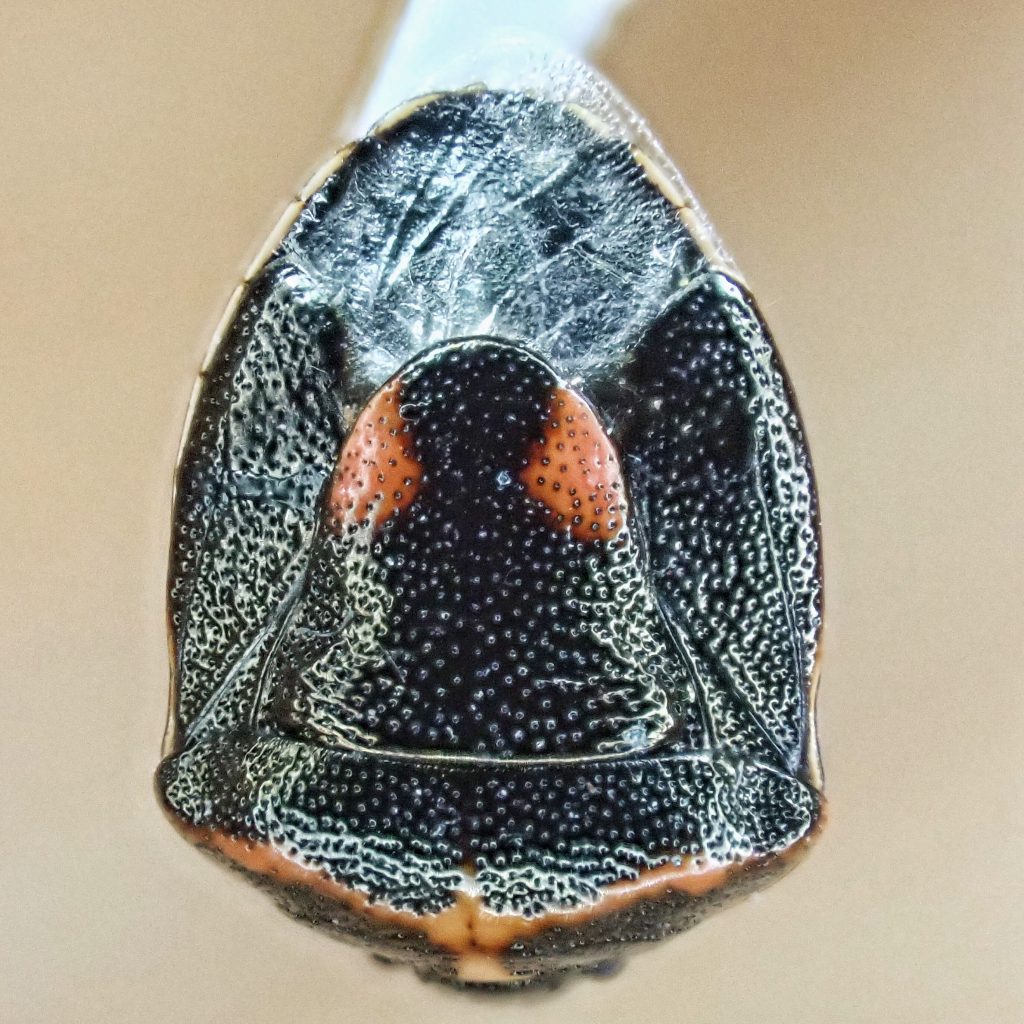
Adults active-Adults may be seen crawling among leaf litter soon after snowmelt on warm sunny days in early spring.” Species Cosmopepla lintneriana – Twice-stabbed Stink Bug – BugGuide.Net
Life cycle– “Females lay eggs in clusters on host plants and guard them. Overwinters as adults under leaf litter.” Species Cosmopepla lintneriana – Twice-stabbed Stink Bug – BugGuide.Net
“They’re pretty hardy, overwintering as adults (sometimes as late-stage nymphs), and hiking around soon after the snow melts in spring.” A Couple of Stinkbugs (Family Pentatomidae) – Field Station
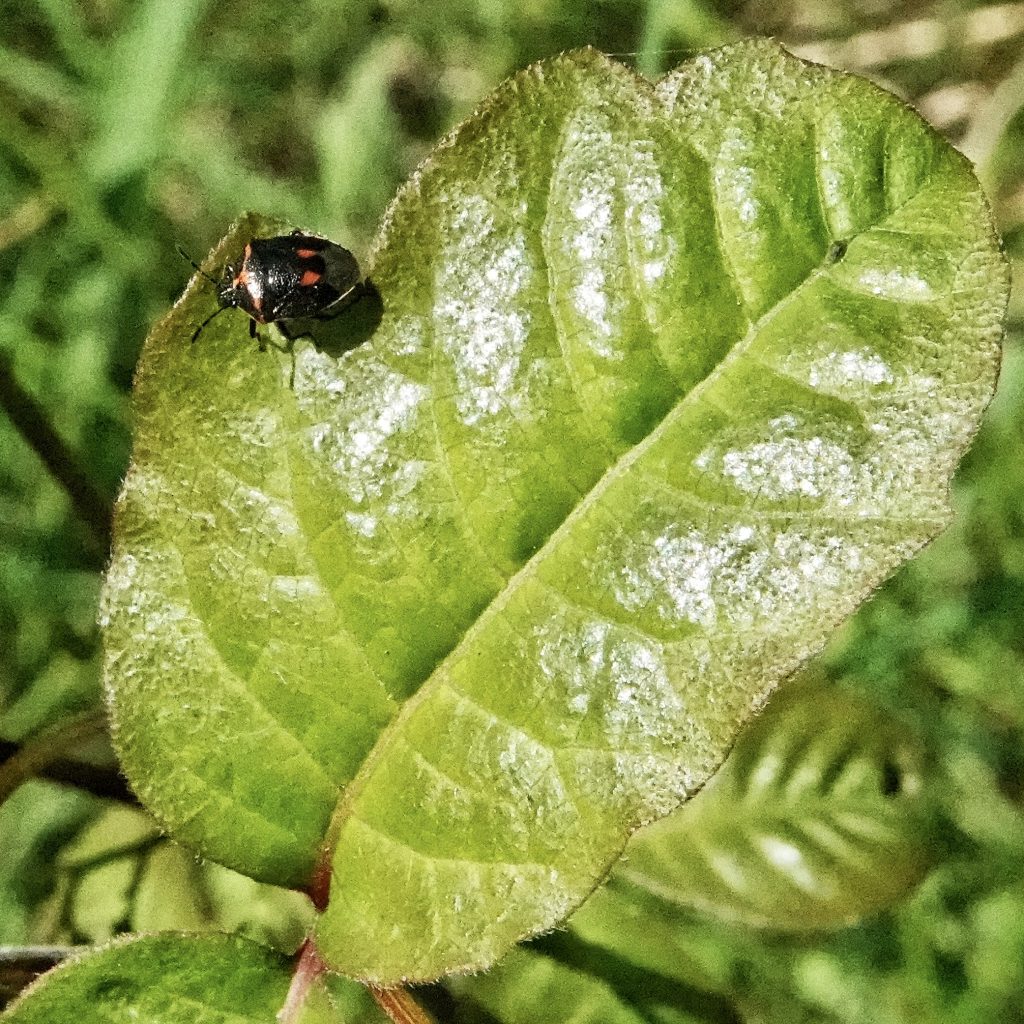
Etymology of names–Cosmopepla seems to be from the Greek words for ‘well ordered/regular/moderate’ and ‘mantle/cloak/upper garment’, but I cannot positively ascertain what that refers to, although most of the adult Cosmopepla I can find photos of have bright markings on the front of the pronotum. The specific epithet lintneriana honors “Joseph Lintner, an agricultural entomologist who held the position of New York State Entomologist from 1881 to 1898.” A Couple of Stinkbugs (Family Pentatomidae) – Field Station . The scientific name was changed from C. bimaculata (meaning ‘two-spotted) in 1986, but I cannot find the reasons for this.
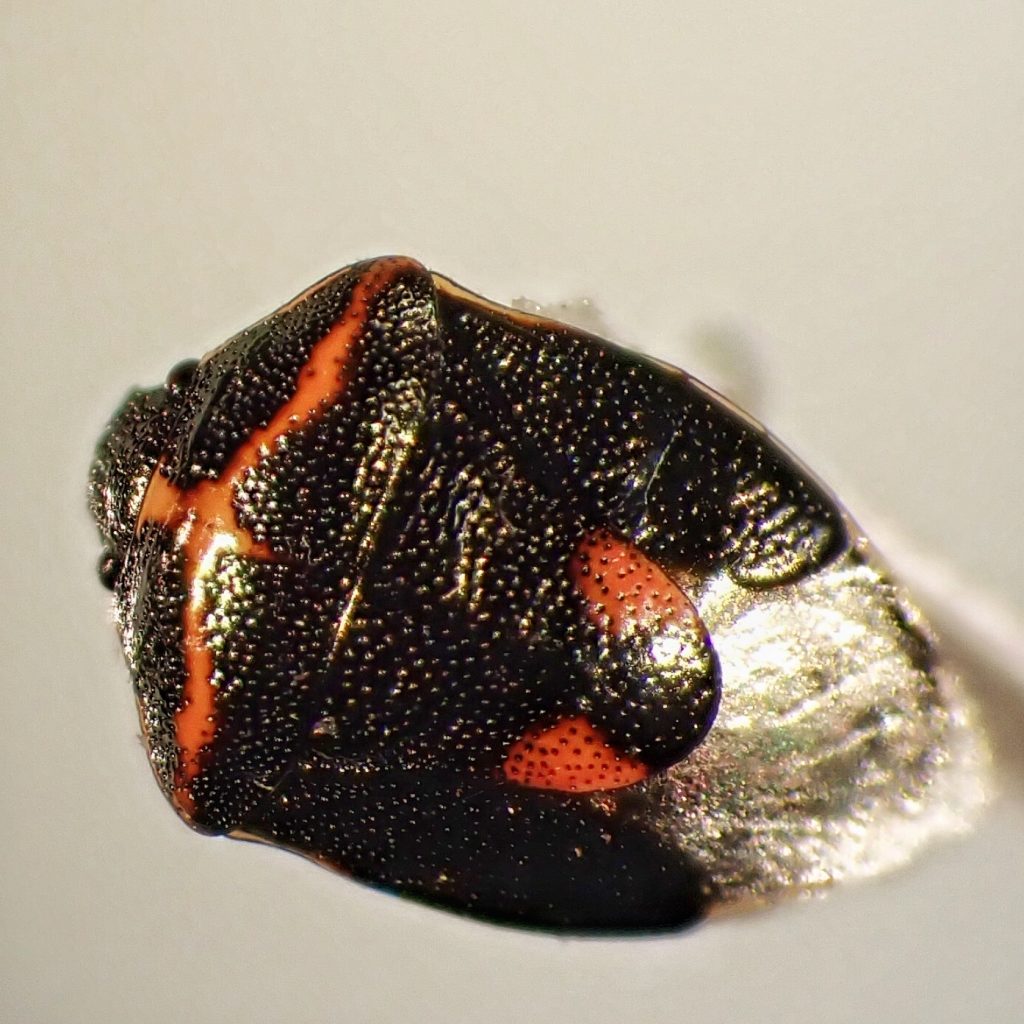
Species Cosmopepla lintneriana – Twice-stabbed Stink Bug – BugGuide.Net
A Couple of Stinkbugs (Family Pentatomidae) – Field Station
Twice-Stabbed Stink Bug – Cosmopepla lintneriana – North American Insects & Spiders
Sci-Hub | Chemical Defense in the Stink BugCosmopepla bimaculata | 10.1023/a:1020822107806
https://en.wikipedia.org/wiki/Cosmopepla_lintneriana
Minnesota Seasons – twice-stabbed stink bug
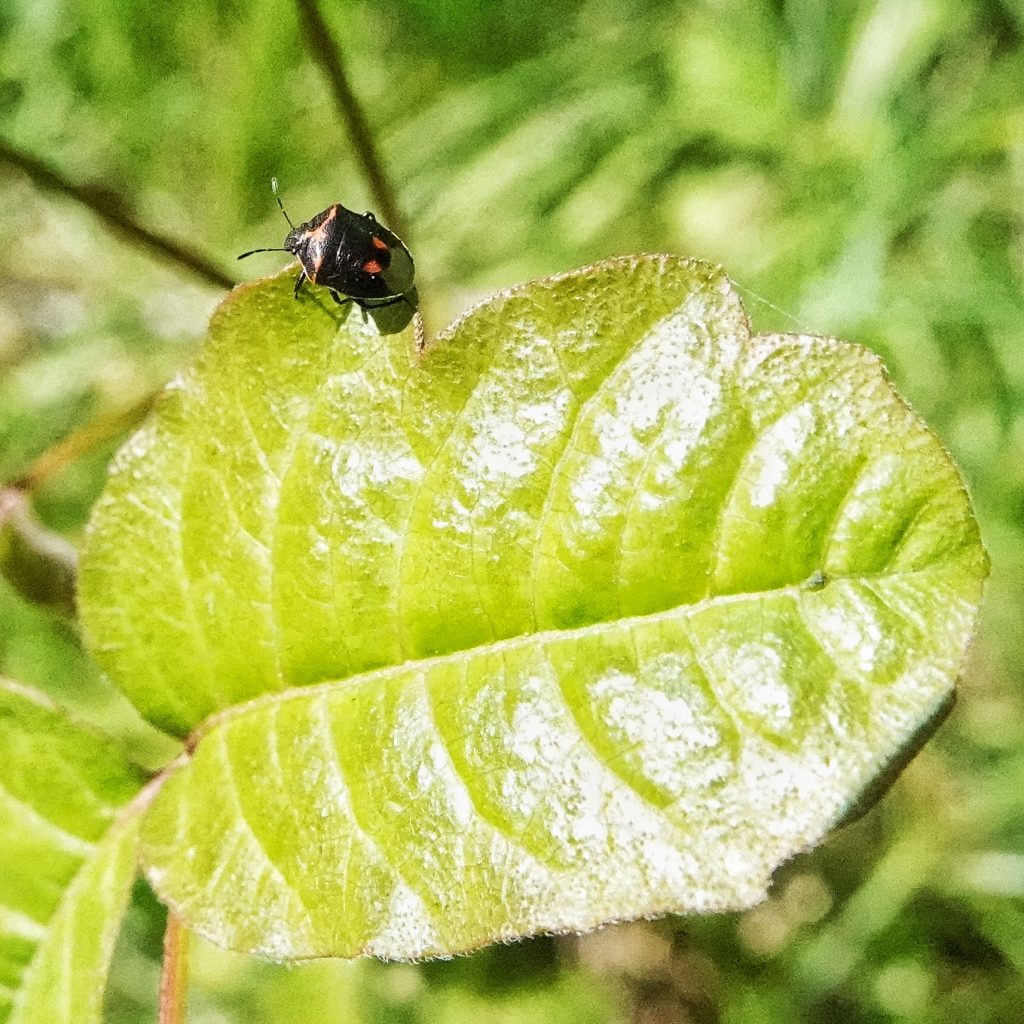
So glad you are “back at it.” I really enjoy these articles (as a former entomologist and naturalist). I have hedge nettle in my backyard, so I will check for these cosmopolitan beasties. Keep on trucking! I support your valuable work!
Thanks for your appreciation, Sharon!
I get why someone went with “twice stabbed” but I would have gone with “seagull” as that is what I see in the other markings.
I can see that, Kat!